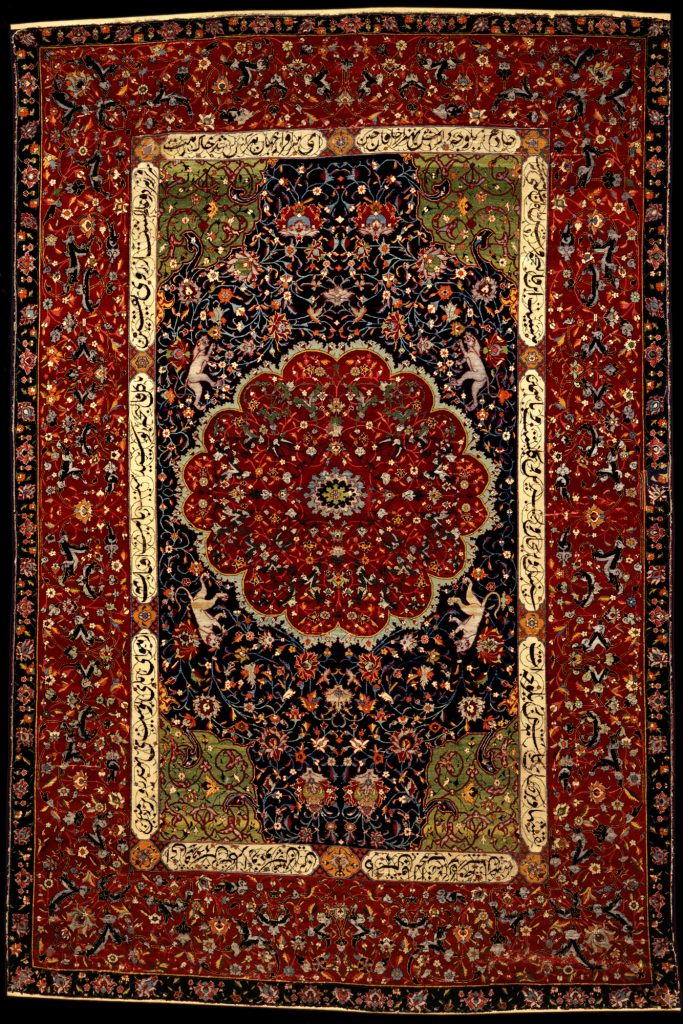



Title: Medallion Carpet
Date: 16th century
Location: Iran, perhaps Kashan
Materials: wool pile, with metal thread on a silk foundation
Dimensions: 248 x 199cm
Accession Number: TXT 220
Other Notes:
This sophisticated carpet has important features in common with the ‘Ardabil’ carpets, a celebrated matching pair now split between the Victoria & Albert Museum and the Los Angeles County Museum of Art, both of them signed Maqsud-i Kashani and dated 942 AH (1535–6 AD), made for the Safavid dynastic shrine at Ardabil in north-west Iran. The ‘Ardabil’ carpets are outstanding for their technical quality and their enormous dimensions, but their unprecedented size clearly placed a burden upon the design resources of the workshop that produced them. This carpet is much smaller, but the design is perfectly matched to the scale.
The main composition consists of a large, lobed central medallion and four corner-pieces of ‘cloud-collar’ form. The composition is framed by a band containing Persian verses in nastal‘liq. The main field is covered with lush chinoiserie lotus scrolls inhabited by four lions in silver thread. The central medallion is filled with an overlay of two types of spiralling scrollwork, organized around a central rosette motif. Similar patterns fill the corner-pieces and the inner border, while the outer border has a repeating lotus-scroll pattern.
The verses contain grandiose references to floor coverings decorated with floral patterns,
‘O you who have had the blossom-filled meadow of the highest heaven spread out in your path, the rose garden of your carpet is the envy of the picture gallery of China!
The patterns and leaves in the garden of your carpet show the hyacinth, the basil, the wild and the garden rose and the jasmine.
This carpet is spread out on the path of a king so sublime that the servant who carries his mat is better than the Emperor of China!
O you who are exalted in the world! Even those who have been dust on your path are exalted in both worlds for sure.
The sun has kissed your feet with the flowers on the carpet; out of a desire to kiss them he places his face on the ground.’
Bibliography:
J.M. Rogers, The Arts of Islam. Masterpieces from the Khalili Collection, London 2010, cat.396, pp.334–5.
Zoom
Close

Create your own collection of artworks that you can print or save as a PDF. Please enter you email to enable feature.
Small Flask | JLY 1075
Has been added to your collection.
TIP:
You can now access and view your collection from the main menu at any time.